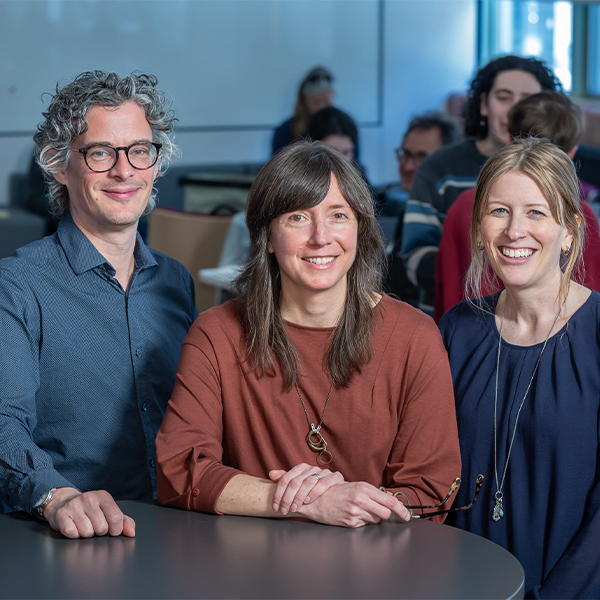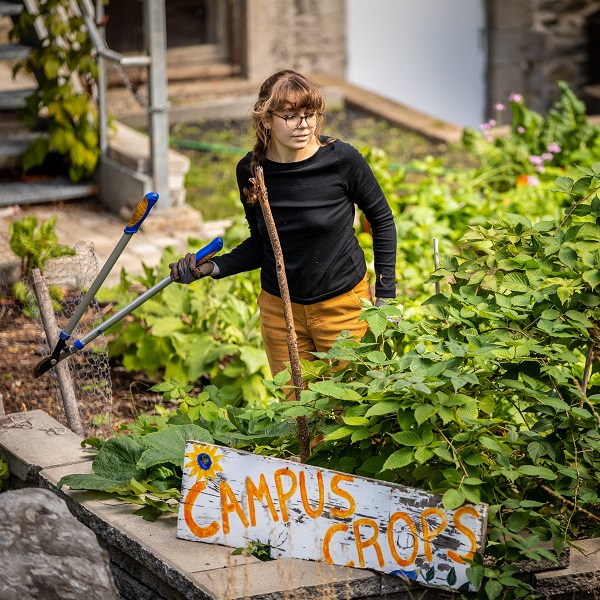In four years, McGill should look even more inviting with additional trees, more parking spaces for bikes and maybe a green roof.
Aesthetics isn’t the driving force, though. Those are just a few of the ideas and initiatives outlined in the McGill University Climate & Sustainability Strategy 2020-2025. The new strategy, which contains 62 actions, will guide McGill’s next steps in its march toward a more sustainable future.
McGill had already set two ambitious targets: attaining the top sustainability rating – platinum – under the Sustainability Tracking, Assessment & Rating System (STARS) by 2030, and becoming carbon neutral by 2040. The new plan adds a third lofty goal: achieving zero waste by 2035.
“I feel that those three targets are really on the line between ambitious and realistic and that’s what we’re looking for – this tension that keeps pushing us forward to truly implement sustainability at the university,” says François Miller, executive director of sustainability at McGill.
“Yes, they are ambitious but they’re realistic as well, and the University is truly committed to those three long-term targets.”
Endorsed by McGill’s Board of Governors in December 2020, the new strategy emerged following a lengthy consultation by the McGill Office of Sustainability. Students played a central role in its development, Miller says. “They made their voices heard about their aspiration for the campus and where we should focus our efforts towards making McGill a more sustainable campus.”
The plan includes conceptual images by students from the Peter Guo-hua Fu School of Architecture, depicting what sustainability might look like at McGill in the future. “We wanted them to be inspired by the actual content of the strategy but also let them imagine how this could manifest in reality,” Miller says.
McGill must divert 90 per cent of its waste from landfill to become zero waste. In 2019, McGill achieved a 37.6 waste diversion rate, up from an estimated 15 per cent in 2016. The aim is to increase the rate to 60 per cent by 2025. To do that, the plan says, McGill will set up integrated waste sorting stations, expand compost collection and reduce the amount of waste generated.
Compost collection is being installed in common areas of nine major buildings on downtown campus – as opposed to just in the University’s cafeterias. “It’s being rolled out as we speak,” Miller says.
A key element of Buildings and Grounds’ waste management improvement plan involves phasing out stand-alone garbage cans in the hallways of many buildings in favour of standardized three- or four-stream sorting stations.
“In terms of infrastructure, that’s also a major shift that will get us closer to our target of becoming zero waste by 2035,” Miller says.
Creating a zero-waste zone on campus is one of the flagship actions in the strategy. The educational space to promote zero-waste habits will likely be set up indoors, according to Miller. Other less visible changes will still have a significant impact on the University’s sustainability performance, he says. For instance, one of the gas-powered boilers in the downtown powerhouse will be replaced by electric boilers, slashing CO2 emissions by 9,000 to 10,000 tonnes a year.
The strategy revolves around eight categories, including research and education, procurement, and landscapes and ecosystems. In the food systems category, one action calls for increasing the amount of food produced at Macdonald Campus and served in McGill’s dining halls. In 2018-2019 fiscal year, McGill’s Macdonald Campus Farm supplied 95,000 eggs, 5,000 kilos of beef, and 15,600 kilos of produce to the University’s cafeterias.
McGill’s Sustainability Projects Fund (SPF) will play a supportive role in the strategy’s implementation. Miller calls it a “spectacular tool” available to students, faculty and staff to help them turn an idea into action.
The SPF’s mission is to build a culture of sustainability at McGill through the development and seed-funding of interdisciplinary projects. It’s the largest fund of its kind in Canada with $1 million in annual funding, supported by a student fee of $0.55 per credit, which is matched dollar-for-dollar by McGill.
McGill’s Board of Governors now boasts a dedicated sustainability committee, which plays an important support and oversight role “to make sure that we’re on track,” Miller says. The McGill Office of Sustainability produces a sustainability dashboard for the committee that shows McGill’s progress on an ongoing basis in implementing the strategy.
“I feel that this strategy is really in line with the University’s intention of playing a leadership role in sustainability, both locally and globally,” says Miller.


